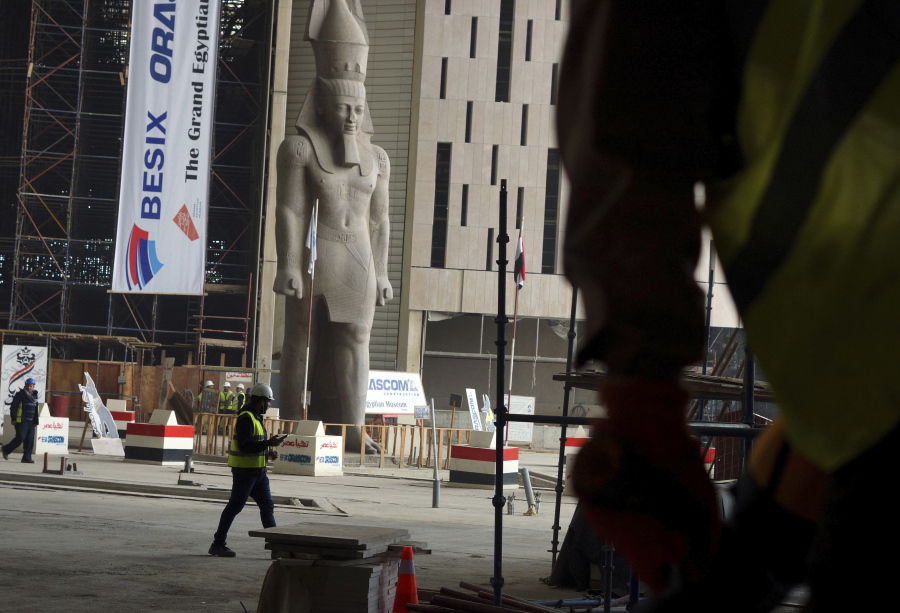CAIRO — On the Giza Plateau outside Cairo, thousands of Egyptians are laboring in the shadow of the pyramids to erect a monument worthy of the pharaohs.
The Grand Egyptian Museum has been under construction for well over a decade and is intended to showcase Egypt’s ancient treasures while drawing tourists to help fund its future development. But the project has been subject to repeated delays, with a “soft opening” planned for next year scrapped in favor of a more triumphant inauguration in 2020. Costs have meanwhile soared from an initial $650 million to well over $1 billion, with most of the financing coming from Japan.
It’s the latest mega-project to be championed by President Abdel-Fattah el-Sissi, who is wagering that massive investments in infrastructure will revive an economy weakened by decades of stagnation and battered by the unrest that followed the 2011 uprising.
The museum is a series of towering concrete halls that will eventually hold some 50,000 artifacts, including the famed mask of Tutankhamen — popularly known as King Tut — and other treasures currently housed in the century-old Egyptian Museum in Cairo’s congested Tahrir Square. The hope is that tourists will stay awhile, and provide the foreign currency Egypt needs to buttress its economy.
“It’s a place where you can linger to enjoy ancient Egypt,” project director Tarek Tawfik said on a recent tour of the site, which will also include a conference center, a cinema, 28 shops, 10 restaurants and a boutique hotel. Giant windows open onto the 5,000-year-old pyramids, and the museum will feature an intact wooden ship and a towering statue of Ramses II.
Tawfik describes it as “a fantastic experience of ancient Egypt in a very modern building that provides all kind of modern, comfortable functions.”
That would mark a major change from the current setup, in which tourists visiting the pyramids and the Sphinx are routinely hassled by touts and camel-drivers.
Tourists are gradually returning to Egypt, but the industry has yet to recover from the 2011 uprising, which toppled longtime autocrat Hosni Mubarak and ushered in a period of instability, culminating in the military overthrow of the country’s first freely elected president, an Islamist whose brief rule sparked mass protests.
El-Sissi, who led the overthrow of Mohammed Morsi in 2013 and was elected the following year, has presided over an unprecedented crackdown on dissent. Political demonstrations, heavily restricted under a 2013 law, are now unheard of. A Sinai-based insurgency that gathered steam after Morsi’s overthrow has carried out a series of attacks in recent years, mainly on security forces and Christians, but has only rarely targeted foreign tourists.
El-Sissi has meanwhile sought to use large-scale projects to bolster the image of the state — with mixed results.



